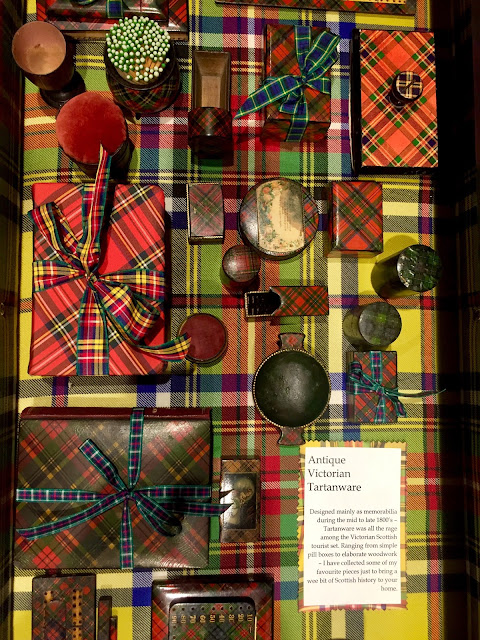"Historic Tartanware from SMW Home . . . "
|
|
Seasons Greetings,
In this time of wrapping gifts and boxes, we here at
Scot Meacham Wood Home are delighted to share Victorian Tartanware Boxes from
our collection. These wee treasures dating from over 150 years ago have
always delighted me. They are the perfect mixture of Scottish history,
the decorative arts, and a time-capsule of the Victorian lifestyle.
One of the best-known creators of these tartanware mementos - W&A Smith - began custom-painting papers with clan tartans and then varnishing the sheets onto Mauchline wood boxes, creating the well-known tartanware boxes we know today. In true Victorian fashion, these mementos celebrated the classic 19th-century lifestyle. There were tartanware containers hiding a tiny compass, small boxes to carry one's snuff, and endless variations on stamp and pill boxes. Because the Victorian loved games, cribbage boards were also very chic!
Enjoy discovering and sharing a piece of history from our collection this holiday season!
|
|
|
|
|
|
Another great discovery is a Go-to-Bed, a lovely little piece of everyday Victorian life.
A
"Go to Bed" is a small matchbox. A match would be struck then placed in
the finial on top of the box to provide just enough light to see
yourself to bed in the cold short days of winter. This one is a great
example of Tartanware.
Scotland
has always drawn tourists because of the natural beauty of the area. In
1852, Prince Albert purchased Balmoral estate in the Scottish Highlands
for Queen Victoria. Small tartanware items were a hit, colorful and
easy to pack for the journey back home on the train.
Originally,
they were hand painted; however, in 1853, new machines were invented to
speed up manufacturing. Tartan designs were applied to paper via
machines, and then glued to small everyday objects made from local
mauchline wood. Boxes and sewing items were especially popular. The
production of tartanware ceased in 1933 after a fire destroyed the
printing machinery, providing the rare items a fixed place in history.









Comments
overtime I am in the uk, I keep my eyes open to no avail. there are big collector clubs that trade, would be fun to join
thanks for your inspiration!
debra